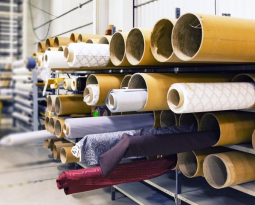West Virginia Patent of the Month – January 2022
Optical analyzers are used in a wide range of applications from nuclear and chemical processing to the oil and gas industries. These devices are great for substance analysis in harsh environments. Optical-based fluid analyzers can detect and measure liquids and gasses. However, many of these devices experience limitations with the required accuracy when comparing similar fluids from different locations. For instance, when performing wireline formation testing, pressure measurements are taken from a borehole. If samples are taken from two different reservoirs, it is expected that each fluid will have different spectra, but the analyzer may not be able to accurately characterize this difference and may limit the measurement’s usefulness.
Pietro Fiorentini, Inc. has designed an improved optical fluid analyzer. Their system uses a drum spectrometer to achieve fluorescence, absorption, and reflectance detection. During analysis, an electromagnetic source generates an optical signal across the usual spectrum of wavelengths. Their tool then uses a source splitter which splits this optical signal in two – a reference and measurement channel. The measurement channel has a test cell which contains the fluid sample. A series of filters can be applied and changed throughout analysis.
A traditional downhole spectrometer comprises up to 20 channels and a single discrete filter to detect fluid presence. Pietro Fiorentini’s design uses 6 discrete filters positioned throughout their channels. Each filter has different wavelengths allowing for analysis at a greater range.
The parallel reference signal is novel to this design. This channel completely bypasses the testing cell of the analyzer. The output of the measurement channel can be normalized using this reference channel to filter out noise and potential interferences.
Are you developing new technology for an existing application? Did you know your development work could be eligible for the R&D Tax Credit and you can receive up to 14% back on your expenses? Even if your development isn’t successful your work may still qualify for R&D credits (i.e. you don’t need to have a patent to qualify). To find out more, please contact a Swanson Reed R&D Specialist today or check out our free online eligibility test.
Who We Are:
Swanson Reed is one of the U.S.’ largest Specialist R&D tax advisory firms. We manage all facets of the R&D tax credit program, from claim preparation and audit compliance to claim disputes.
Swanson Reed regularly hosts free webinars and provides free IRS CE and CPE credits for CPAs. For more information please visit us at www.swansonreed.com/webinars or contact your usual Swanson Reed representative.

















